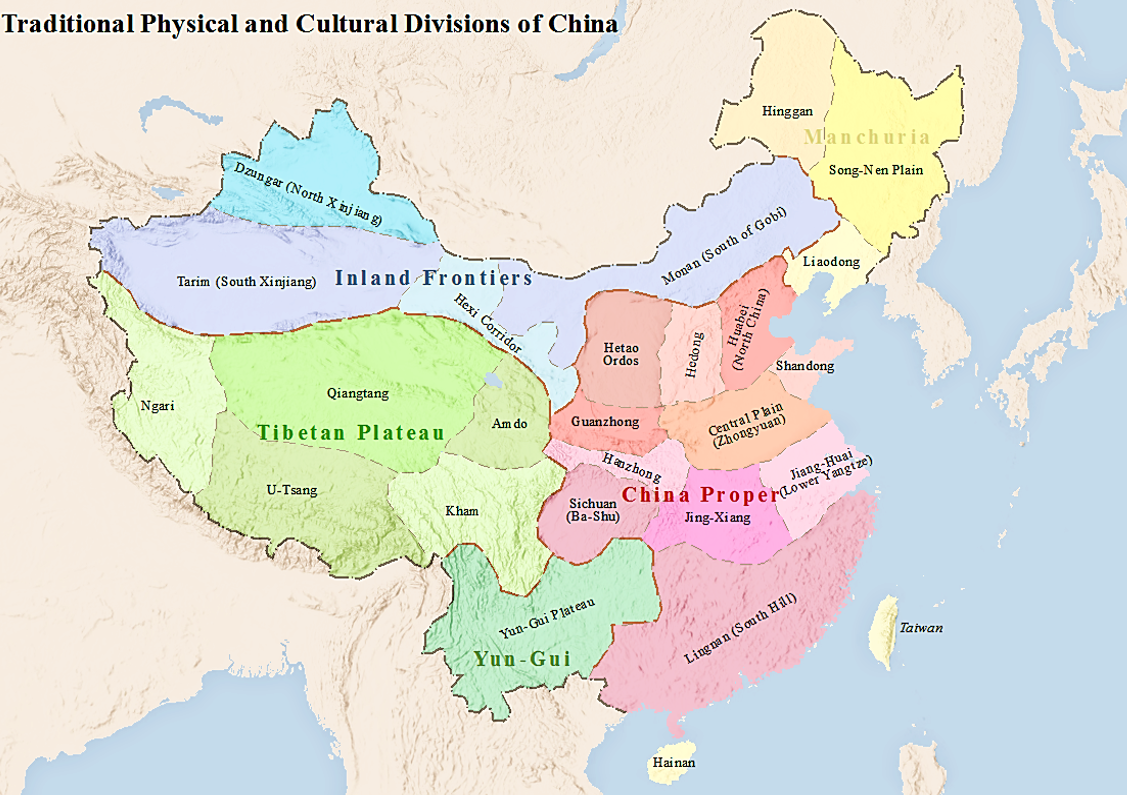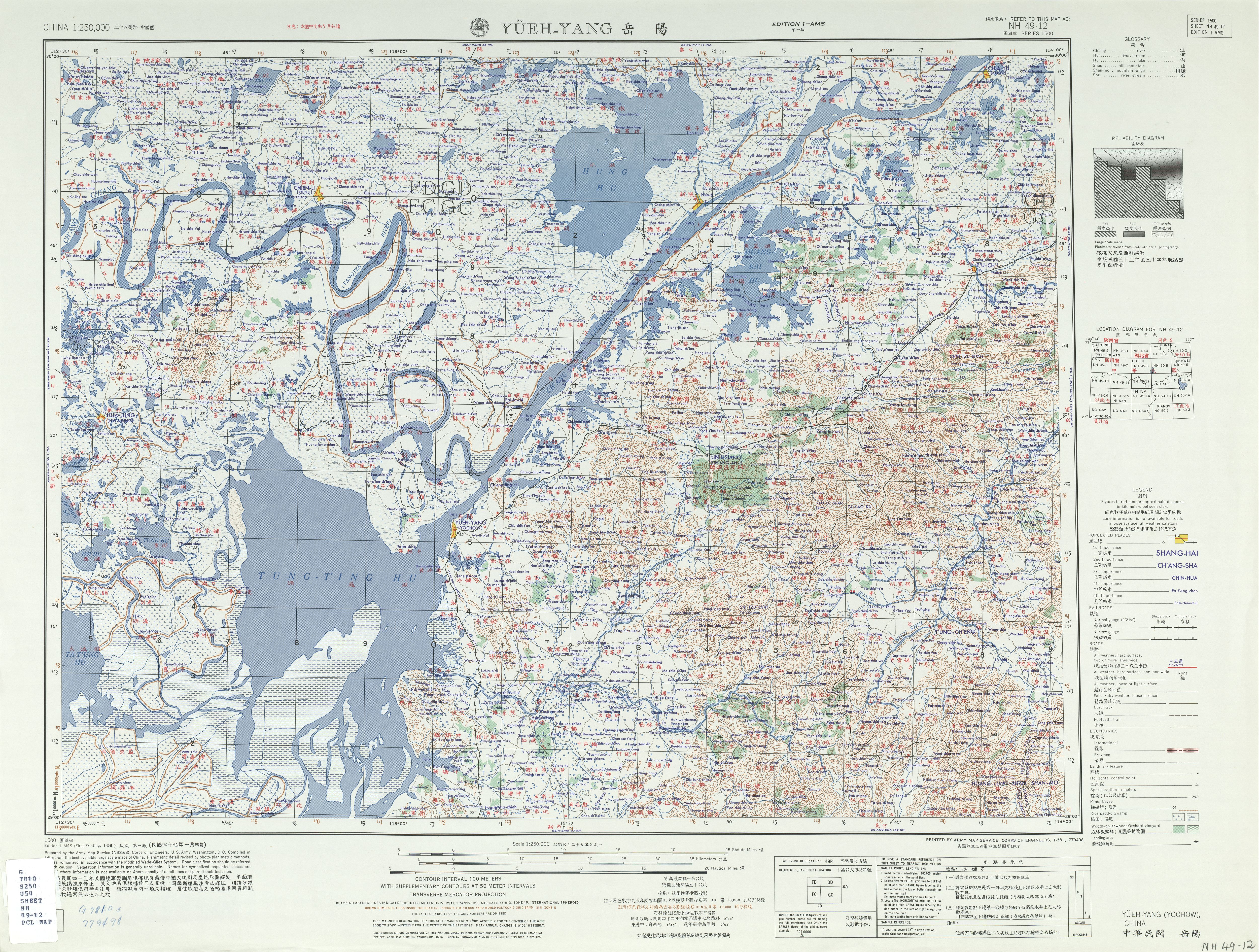|
Lishui River
Lishui River (also known as Li River, Chinese language: 澧水, pinyin: lǐshuǐ, Wade-Giles: li3-shui3) is a river in Hunan province of China, one of the Yangtze River's four largest tributaries in the province. (Also see the Li River disambiguation page.) Lishui has three origination places, the north, the middle and the south. The north one is the most important place, origination from Shanmujie of Sangzhi county in Zhangjiajie. The middle one, origination from the east side of the Badagongshan Mountain in Sangzhi and the south place, origination from Longjiazhai of Yongshun County in the Tujia and Miao Autonomous profecture of Xiangxi. The three originations join the main river in Nancha of Sangzhi, then runs east. Loushui River is a tributary of Lishui River. It flows into the Dongting Lake at Xiaodukou in Jinshi. Its total length is . Cities along the river include (listed from mouth to source) * Jinshi * Lixian * Shimen * Cili * Zhangjiajie See also * Geography o ... [...More Info...] [...Related Items...] OR: [Wikipedia] [Google] [Baidu] |
Yongshun County
Yongshun County () is a county of Hunan Province, China. It is under the administration of Xiangxi Autonomous Prefecture. Located on the western part of Hunan and the northeastern Xiangxi, the county is bordered to the northeast by Sangzhi County, to the east by Yongding District of Zhangjiajie City, to the southeast by Yuanling County, to the south by Guzhang County, to the southwest by Baojing County, to the west by Longshan County. Yongshun County covers , as of 2015, It had a registered population of 538,200 and a resident population of 448,500.about the population of Yongshun County in 2015, according to the oahmhxc.com/ref> The county has 12 towns and 11 townships under its jurisdiction, the county seat is Lingxi Town ().the divisions of Yongshun County in 2015, according to the , also see oxinhuanet.com/ref> Settlements Settlements in Yongshun county include: * Longjiazhai * Qingtianping * Shidixi Shidi () is a small town in Yongshun County Yongshun County () is a ... [...More Info...] [...Related Items...] OR: [Wikipedia] [Google] [Baidu] |
List Of Rivers In China
This incomplete list of rivers that flow through China is organized according to the body of water into which each river empties, beginning with the Sea of Okhotsk in the northeast, moving clockwise on a map and ending with the Arctic Ocean. Sea of Okhotsk * Heilong River (黑龙江) (Amur River) **Ussuri River (乌苏里江) ***Muling River (穆棱河) *** Songacha River (松阿察河) ** Songhua River (松花江) *** Ashi River (阿什河) *** Hulan River (呼兰河) *** Second Songhua River(第二松花江) *** Woken River (倭肯河) *** Mudan River (牡丹江) *** Nen River (嫩江) ****Gan River (Inner Mongolia) (甘河) ***Huifa River (辉发河) ** Argun (额尔古纳河) ***Hailar River (海拉尔河) ***Hulun Lake(呼伦湖) ****Kherlen River (克鲁伦河) ****Buir Lake(贝尔湖)(mostly in Mongolia) Sea of Japan * Suifen River (绥芬河) / Razdolnaya River (Russia) * Tumen River (图们江) ** Hunchun River (珲春河) Bohai Sea *Anzi River (鞍子河) *Fuzho ... [...More Info...] [...Related Items...] OR: [Wikipedia] [Google] [Baidu] |
Geography Of China
China has great physical diversity. The eastern plains and southern coasts of the country consist of fertile lowlands and foothills. They are the location of most of China's agricultural output and human population. The southern areas of the country (South of the Yangtze River) consist of hilly and mountainous terrain. The west and north of the country are dominated by sunken basins (such as the Gobi and the Taklamakan), rolling plateaus, and towering massifs. It contains part of the highest tableland on earth, the Tibetan Plateau, and has much lower agricultural potential and population. Traditionally, the Chinese population centered on the Chinese central plain and oriented itself toward its own enormous inland market, developing as an imperial power whose center lay in the middle and lower reaches of the Yellow River on the northern plains. More recently, the coastline has been used extensively for export-oriented trade, causing the coastal provinces to become the lead ... [...More Info...] [...Related Items...] OR: [Wikipedia] [Google] [Baidu] |
Cili County
Cili () is a county in Hunan Province, China under administration of the prefecture-level city of Zhangjiajie. Located in the north of Hunan and the east of Zhangjiajie, Cili County is bordered to the southeast by Taoyuan County, to the south and the southwest by Yongding District, to the west and the northwest by Sangzhi County, to the north and northeast by Shimen County. Cili is also the home of the Tujia people. The County has an area of with 703,452 of registered population and roughly 613,000 permanent population (as of 2015).population of Cili County: according t2015年慈利县国民经济和社会发展统计公报 also sezjjrs.gov o It is divided into 25 township-level divisions (November 27, 2015), its county seat is Lingyang Town (). Recently a tomb was discovered around Cili that was 2,200 years old. Among the items discovered was a bronze cooking vessel that contained fish. The tomb was that of an ancient senior official . Administrative divisions According to t ... [...More Info...] [...Related Items...] OR: [Wikipedia] [Google] [Baidu] |
Shimen County
Shimen County () is a northernmost county of Hunan Province, China, it is under administration of the prefecture-level city of Changde. Located on the northern margin of Hunan and the west of Changde, Shimen County is bordered to the south and southwest by Taoyuan, Zili and Sangzhi Counties, to the west by Hefeng County of Hubei, to the north by Wufeng County of Hubei, to the east by Songzi City of Hubei, Li and Linli Counties. Shimen is a mountainous county located on the Wuling Mountains, Mount Huping () which, at on the northwest of the county, is the highest point of Hunan. Shimen is also the home of the Tujia people, the descendant of Chinese ancient Ba People, the Tujia people shares 50.9% of the population in the county. The county has an area of with 669,741 of registered population and 601,100 of permanent population (as of 2015). It is divided into 19 towns and townships, five units of State-owned farms (as of 2016). Administrative divisions According to ... [...More Info...] [...Related Items...] OR: [Wikipedia] [Google] [Baidu] |
Li County, Hunan
Li County, or Lixian () is a county in Hunan Province, China, it is under the administration of the prefecture-level city of Changde. The County is located on the north in Hunan Province, it borders to the north by Songzi City and Gong'an County of Hubei Province, the east by Anxiang County, the south by Jinshi City and Linli County, the west by Shimen County, it has an area of with 919,500 of registered population (as of 2015), It is divided into 15 towns and four subdistricts under its jurisdiction, the county seat is Liyang Subdistrict (). Administrative divisions According to the result on adjustment of township-level administrative divisions of Li County, Hunan on November 23, 2015, Li County has 15 towns and four subdistricts under its jurisdiction.Township-level administrative divisions of Li County: According to , also see or they are: ;15 towns * Cennan () * Chengtoushan Town () * Dayandang () * Fuxing, Li County () * Ganxitan () * Guanyuan, Li County () * ... [...More Info...] [...Related Items...] OR: [Wikipedia] [Google] [Baidu] |
Jinshi City
Jinshi () is a county-level city in Hunan Province, China, it is under the administration of the prefecture-level city of Changde. Jinshi is located on the north in Hunan Province and the central north in Changde, it borders to the northeast and the northwest by Li County, the west by Linli County, the south by Dingcheng District, the east by Anxiang County, The city has an area of with 239,744 of registered population (as of 2016). It is divided into four towns and five subdistricts under its jurisdiction. The government seat is Xiangyangjie (). Jinshi was honored as the National Sanitary City. Administrative divisions according to the result on adjustment of township-level administrative divisions of Jinshi City on November 23, 2015 Jinshi City has four towns and five subdistricts under its jurisdiction., also see or they are: ;4 towns * Xinzhou, Jinshi () * Maolihu () * Yaoshan, Jinshi () * Baiyi () ;5 Subdistricts * Sanzhouyi () * Wangjiaqiao () * Xiangyangjie Xiangy ... [...More Info...] [...Related Items...] OR: [Wikipedia] [Google] [Baidu] |
Dongting Lake
Dongting Lake () is a large, shallow lake in northeastern Hunan Province, China. It is a flood basin of the Yangtze River, so its volume depends on the season. The provinces of Hubei and Hunan are named after their location relative to the lake: ''Hubei'' means "North of the Lake" and ''Hunan'', "South of the Lake". Dongting Lake is famous in Chinese culture as the place of origin of dragon boat racing. It is the site of Junshan Island and is home to the finless porpoise, an endangered species. Geography In the July–September period, flood water from the Yangtze flows into the lake, enlarging it greatly. The lake's area, which normally is (data before 1998), may increase to in flood season, when vast amounts of water and sediment from the Chang Jiang flow into the lake. The lake is also fed by four major rivers: the Xiang, Zi, Yuan and Li rivers. Small rivers also flow in, the most famous one being Miluo River where poet Qu Yuan committed suicide. In addition, the X ... [...More Info...] [...Related Items...] OR: [Wikipedia] [Google] [Baidu] |
Loushui River
The Loushui River () is the main tributary of the Lishui River in China. It starts in the southwestern part Hubei Province ( Wufeng and Hefeng counties), and flows into Hunan Province Hunan (, ; ) is a landlocked province of the People's Republic of China, part of the South Central China region. Located in the middle reaches of the Yangtze watershed, it borders the province-level divisions of Hubei to the north, Jiangxi t .... Right before leaving Hubei for Hunan, the river is interrupted by the Jiangpinghe Dam. References Rivers of Hubei {{China-river-stub ... [...More Info...] [...Related Items...] OR: [Wikipedia] [Google] [Baidu] |
Xiangxi
Xiangxi Tujia and Miao Autonomous Prefecture (; Tujia: Xianxxix bifzivkar befkar zifzifzoux; Miao: Xangdxid tutjadcul maolcul zibzhibzhoud) is an autonomous prefecture of the People's Republic of China. It is located in northwestern Hunan province. It consists of one city, Jishou, and seven counties: Baojing, Fenghuang, Guzhang, Huayuan, Longshan, Luxi, Yongshun. Jishou is the capital. Of the 2,480,000 residents, 66.6% are ethnic minorities from 25 different ethnic groups, including 860,000 Tujia and 790,000 Miao. History Xiangxi has a long history. The land was sparsely inhabited during the Shang dynasty, through the Warring States period up to the era of the Sui dynasty and Tang dynasty. It fell under the influence of the Chu state during the Warring States era. Later, it became part of the Western and Eastern Han dynasty. After the collapse of the Han dynasty, it came under the control of the Shu dynasty during the Three Kingdoms Period of China. Then the area became a s ... [...More Info...] [...Related Items...] OR: [Wikipedia] [Google] [Baidu] |




